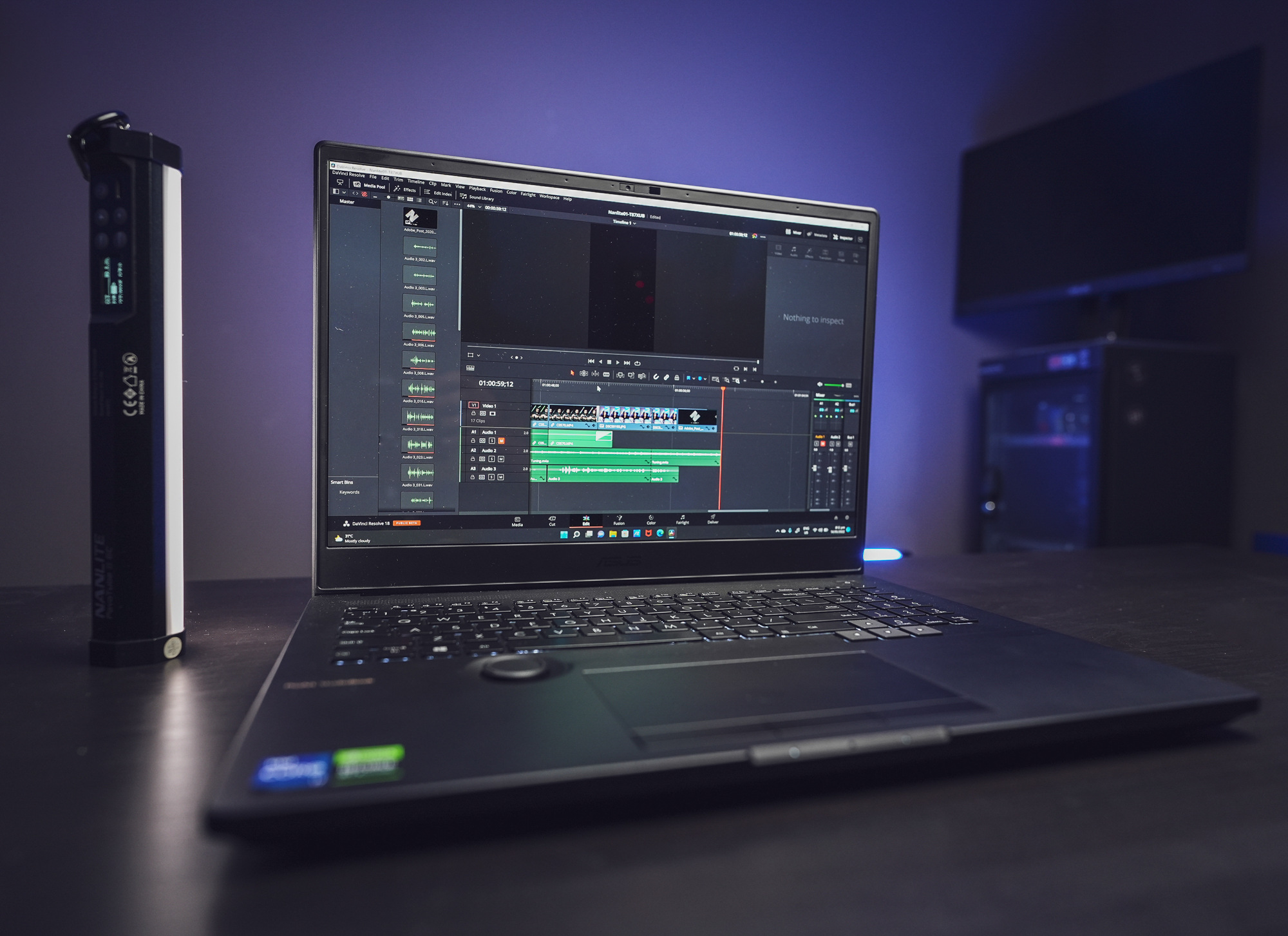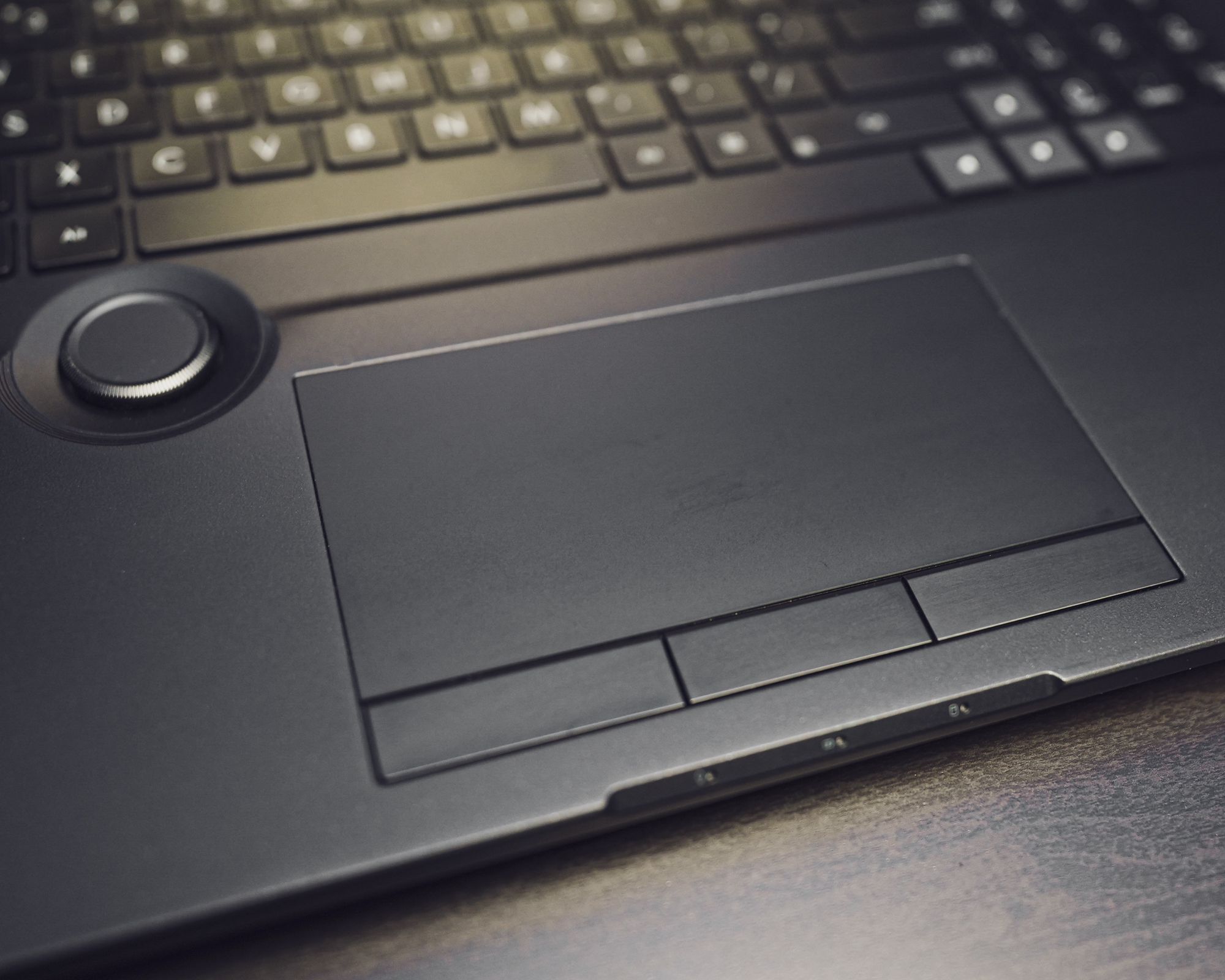This unique laptop from ASUS offers more than just a powerful computer. Let’s take a look at how the ProArt StudioBook 16 can contribute to your post-processing and retouching workflow.
Over the past few years, leading tech brands have been focused on creating devices (computers, monitors, laptops, and mobile phones) that are geared toward being used by creatives. This includes photographers, graphic artists, filmmakers, colorists, and video game creators. These devices often come with enhanced graphics capabilities as well as unique features that could aid the workflow of the users that whom they were made for. The ASUS ProArt sub-brand first entered the market through various professional-grade monitors that have remarkable color accuracy among many other features. However, in more recent years, the brand has expanded this to an entire ecosystem of devices that are tailored to creatives and this laptop is one of the latest to join that line.
External Features, Build, and Size

The ProArt StudioBook 16 comes in an all-black body with a matte anti-fingerprint finish that is different from ASUS’ usual circular brushed steel aesthetic. This black slate is topped by a simple chrome ProArt logo right smack in the middle. This 16-inch laptop comes in at 2.40 Kilograms with a relatively slim 0.78-inch width when closed. All of this within a 14.5 x 10.3-inch body. This US Military-grade build does come in quite large compared to most creative laptops though this is mostly due to the 16-inch display. The only downside for photographers would mean having to use a bigger camera bag (since most camera bags have laptop compartments up to 15.5 inches) or use an entirely separate laptop bag altogether.
Connectivity and Ports

For a portable device to be considered an on-the-go workstation, it would have to at least offer most connectivity options that a creative would need. The ProArt Studiobook 16 has both sides packed with various connectivity ports for additional hardware, AV input and output, and storage media. The left side comprises a safety lock, a USB 3.2 Gen 2 USB-A port, the DC port in the middle, an HDMI 2.1 compatible port, a Thunderbolt 4 USB-C port, and another USB-C 3.2 Gen 2 port capable of power delivery, DisplayPort, and VR support. On the right is a 1Gbps RJ45 ethernet port, another USB 3.2 Gen 2 type A port, a 3.5mm combo audio input-output jack, and a full-sized SD Express 7.0 card reader.
Both sides are also equipped with three large vents for the ASUS Icecool Pro thermal solution that is optimized for heavy graphics use to keep the device as cool as possible. Inside, the laptop is also equipped with Dual-band Wi-Fi 6 2*2 and Bluetooth 5.2.
Display

The 16 Inch 4K OLED screen contributes the most to the size of this laptop. It comes with a 16:10 aspect ratio with a glossy glass surface. Maximum brightness is at 550 nits. This OLED screen can display 100% of the DCI-P3 color space, has a VESA HDR rating of 500 with a contrast ratio of 1M:1, and a response time of 0.2. This display has both Pantone validation and Calman verification for color accuracy which is rated Delta E <2. While this rating does signify superior color accuracy, such accuracy is of course attained still with constant manual calibration. Unlike other creator laptops around though, the screen is neither touch-sensitive nor pen compatible.
Internal
The ASUS ProArt Studiobook 16 comes in multiple variants depending on the installed processor and GPU among others. This particular model is the H7600H which is can be considered the entry-level of the ProArt Studiobook 16 line.

This particular model uses a 2.4 GHz 11th Gen Intel Core I7 8-core processor (an I9 option is available), with 1 Tb of storage (available up to 4Tb), and 32Gb DDR4 RAM (available up to 64Gb). This device also packs an NVIDIA GeForce RTX 3060 laptop GPU with accompanying NVIDA Studio Driver optimization for a wide selection of photo, video, and 3D processing software.
Creative Tools
The ProArt Studiobook 16 isn’t just a computer with significant graphics processing capabilities and a reliable display. In addition, it has some unique hardware features that photographers might find handy for photo editing and retouching workflows.

Default dial console for Adobe Lightroom
The ProArt Dial is a fully customizable shortcut dial that can be used for editing functions as well as system-related adjustments. This physical dial rests on the upper left corner of the trackpad and is embedded into the bottom frame making it non-obstructive to closing the laptop. The dial simply has to be rotated to scroll through selections and manipulate sliders and pressed once to select specific functions. The ProArt Dial can be customized to include functions from a wide selection of compatible editing apps and is particularly optimized for Adobe Lightroom, Photoshop, and Premiere. Customizing the functions is done through the Asus ProArt Creator hub that gives full access to the functions of the dial and other custom buttons available on the keyboard.

Alongside the dial is a relatively larger-than-usual touchpad. While it seemingly looks like a regular function touchpad, it does have some unique features. For one, it has an additional button that can be customized for extra functions. On top of that, this touchpad actually doubles as a portable graphic pen tablet. With a sensitivity of 1024 pressure levels, the touchpad is compatible with various versions of the ASUS pen. This pen function can be quite useful in making local adjustments and retouching photos when the photographer is outside of usual office or studio environments. While the size of this built-in tablet is not equivalent to the function and ergonomics of a full-sized graphic tablet, having it on-the-go can be beneficial.

The additional creative functions on the touchpad and dial definitely offer a lot of benefits to the workflow of photographers and other creatives, especially when working on location. With the available extra space on the surface of the laptop, it might be a good idea to add a few more customizable buttons alongside the dial. While the pen compatibility is definitely a huge advantage, it would have also been great if a storage slot for the pen was put on one side or at the bottom of the laptop.
Application
Using the ProArt Studiobook 16 for photo editing and post-processing definitely has its advantages both in the aspect of software performance and overall ergonomics. This particular variant, H7600H, is the unofficial base model for this series with an Intel I7 processor, 1 Terabyte of storage, and 16Gb of RAM. However, in using it for photo editing, raw processing, and retouching, the performance is definitely more than enough for what is needed and the supposed GPU acceleration offered by the NVIDIA Studio optimized drivers give a smooth and lag-free experience. GPU acceleration is also felt with processes such as building panoramas, merging HDR images, and raw file enhancement (boosting size and resolution) through Adobe’s “enhance detail” function. I also did test the performance on rendering 360 panoramas which resulted in about 30-50% decrease in total processing time.

The combination of the ProArt dial and the hybrid touchpad offers additional efficiency when working on-the-fly. The dial gives an easily accessible shortcut to most (if not all) functions necessary for global adjustments as well as shortcuts to system-related functions. The trackpad gives a certain level of detail-accurate inputs when it comes to retouching and manual composite work on photoshop. Considering that this comes with a 16-inch OLED screen with significant color accuracy, one can see this laptop as a worthy mobile workstation for photographers.
What I Liked:
- Powerful computer for post-processing
- Customizable dial for more efficient editing
- Pen compatible touchpad
- 16 Inch 4K OLED screen with delta E <2 color accuracy
- Good collection of I/O ports
What Can Be Improved:
- Screen not touch-sensitive nor pen compatible
- Extra customizable buttons can be placed below the ProArt dial
- No storage slot for stylus







What the heck...It's already discontinued?
The device is very good, and I agree with what can be improved.
But the most frustrating thing about it is that they picked the wrong time frame for announcement and release (with RTX Ti mobile). I mean they started the release back in October, just 4 months before both AMD and intel released a brand new CPUs which brought great improvements in performance, efficiency and features, which made it outdated already. And as the laptop took somewhile to actually became available in most markets, thats mean it became even more outdated. It's still not available everywhere, and new gen laptops are already started to appear, even from ASUS them self's!!
I guess, the next update will have to wait till early next year with mobile RTX 4000 series GPUs and new CPUs from both AMD and intel, the new Ryzen 7000H(x) Zen 4 based APUs from AMD and the new 13th gen Raptor Lake-H from intel.
And they better lower the price as well, because it's overpriced, I'm not compared it to low end/value product. But it's not a high-end pro level either and should be priced accordingly, maybe just $200-300 max above the high-end thin gaming laptop Zephyrus M16 which I already think it's overpriced a little bit but it's okay.
I never realized this but you are absolutely right. Im not the kind of person who watches processor releases the way I watch new camera gear releases but that absolutely makes sense.
Chris Rogers I checked with my contacts, it’s not yet discontinued probably just out of stock at BH. Also if you check the variants on the product page it says stocks are on the way.
Aaahhh sweet! I was really confused when I saw the BH page said discontinued. I've been looking for a new laptop and this one seems to fit the bill for the majority of use cases I encounter! Thanks for checking on that much appreciated!
Very much welcome!